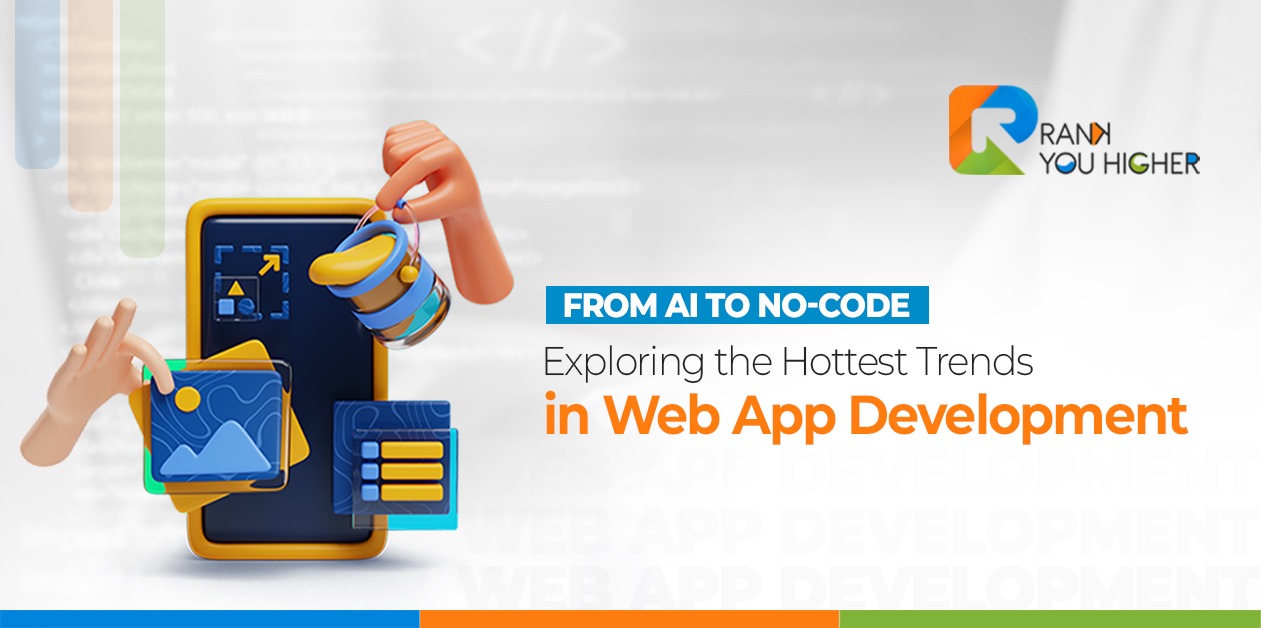The web app development world always looks to change and renew yearly with new technologies and methods. With businesses and developers of every type frustrated with slower ways to build and deploy applications, two trends have generally been said to revolutionize application developers: Artificial Intelligence (AI) and No-Code. These innovations are shaping the web app development space to make it simpler, faster, and cheaper in the creation of outstanding applications for a broad range of companies. In this blog, let’s look at these trends and how they are moulding the future of web app development.
One of the most fascinating ways AI transforms web applications is through personalized user experience. Machine learning algorithms help apps learn from users’ interactions, make predictions, and determine what kind of content they may want to receive. For example, e-commerce sites use AI today to suggest items based on what customers have browsed or bought before because it makes life easier. Personalization enhances user interaction and retention and ultimately yields higher conversion rates.
Besides these innovations, integrating chatbots and virtual assistants represents excellent potential for AI in web applications. Those AI-based tools can get back to the users with their queries in real time, thus providing immediate service with or without human intervention. Whether it’s an ordinary request for customer support or a recommendation for some product, intelligent assistants stay active at all times and through every window, promoting efficiency and consumer satisfaction. With the help of natural language processing, people are allowed to interact in a more conversational, intuitive way.
For example, predictive analytics is enhancing the efficiency of web applications using AI. AI analyzes user data, identifying patterns and trends to help make data-driven decisions. For instance, AI can predict customer behaviour and peak traffic and automate many processes in the app. This enhances performance because businesses can offer more targeted services while giving users access to the most relevant content or features anytime.
At the same time, while AI is revolutionizing what a web application does, the No-Code platforms democratize how an app is built. No-Code allows nontechnical or technical individuals to develop complete web applications without writing any lines of code. It has been so easy that drag-and-drop interfaces, templates, and pre-built elements help entrepreneurs, small businesses, and even hobbyists to implement their ideas quickly on a shoestring budget.
No-code has made app development relatively easy by enabling the designing, building, and deployment of applications. No deep understanding of programming is required, but clear visual interfaces enable piecing together app elements and workflows through simple drag-and-drop operations. The current world now opens up possibilities for non-developers, and they can come up with everything, from landing pages to complex databases, that require steeper learning curves.
Saving time and money is the most prominent advantage of No-Code development. Traditionally, app development requires several skilled developers, designers, and project managers, which proves to be costly and exhausting. In contrast, No-Code platforms allow businesses to launch web apps much quicker, saving time and costs by even half. It tests out ideas, iterates over prototypes, and even launches Minimum Viable Products without the burden of having a massive budget for full-fledged development.
It makes a huge difference for entrepreneurs, as such platforms enable them to quickly prototype and deploy web applications—a simple e-commerce site or a custom CRM tool. Startups can iterate rapidly on their ideas, make changes on the fly, and even scale their apps as their business grows. Since no coding is involved, there’s less dependency on external developers, enabling entrepreneurs to have more control over their projects.
Among AI, No-Code and PWAs are the most significant waves created in web development. A PWA web page acts like a native mobile application but runs in the browser. Using a PWA, users get fast, reliable, and engaging app-like experiences without downloading anything from an app store.
PWAs also support full functionality across multiple devices and platforms. Web applications do not have the same appearance or functionality on a mobile device as on a desktop. Still, PWAs are designed to provide an entirely congruent experience, regardless of the device accessed. This makes it easier for businesses to expand their reach without developing separate apps for iOS, Android, and desktop users.
PWAs also retain the ability to function when internet connectivity is absent. Due to caching critical resources, PWAs enable users to engage even when an internet connection is lacking. This is particularly valuable for content-intensive websites or productivity tools where access to the internet is necessary. Thirdly, PWAs support push notifications, which allows businesses to keep users’ attention with timely updates, promotions, or reminders to engage them with the app.
Serverless computing is the final piece of the puzzle and has gained momentum. It helps developers build and scale web apps with no servers to manage. In a serverless architecture, provisioning and maintaining infrastructure are done automatically by the cloud provider itself, so the developer does not need to think about those things. This is how serverless computing can dramatically improve scalability, making it easy to deal with traffic spikes and then scale up or down.

